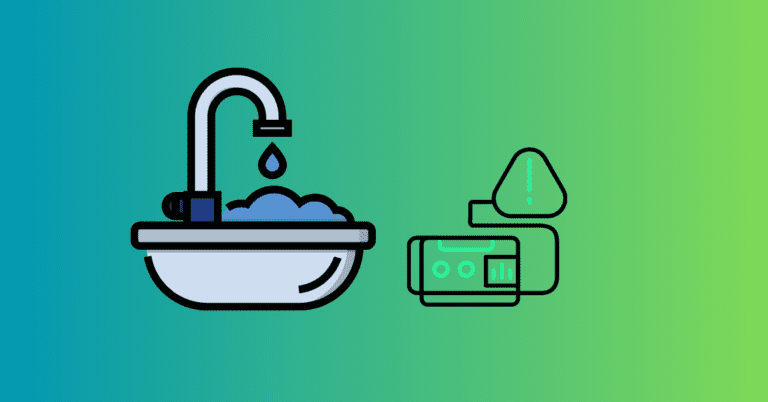Solar Charger for CPAP Battery: Power Your Therapy Anywhere!
Jeremy Smith is a long-term CPAP user and sleep apnea advocate. After being diagnosed with severe obstructive sleep apnea, he created ByJeremySmith.com to help others navigate CPAP therapy through personal stories, gear reviews, and practical advice.
If you’ve been using a CPAP machine to treat your sleep apnea, you already know the importance of consistent therapy.
And you also know you can’t live without it.

But what happens when you’re camping and traveling and face a power outage? That’s where a solar charger for your CPAP battery comes in handy.
In this guide, we’ll explore the benefits of solar chargers, what to look for when choosing one, and how to get the most out of your device.
Why Choose a Solar Charger for Your CPAP Battery?
Traditional CPAP batteries keep your machine running when you’re off the grid, but they only last for a limited time.
My CPAP battery only lasted two nights when I went to Europe last year. But if you’re going camping, going solar is probably a better option!
Adding a solar charger extends your independence by allowing you to recharge the battery using sunlight, making it a game-changer for adventurers and those living in remote areas.
Key Benefits of Solar Chargers:
- Energy Independence: No need to worry about finding a power outlet. You can recharge your CPAP battery with a solar charger wherever the sun shines.
- Eco-Friendly: Reduce your carbon footprint by using renewable energy. Solar chargers harness the sun’s power, making them a sustainable choice.
- Cost Savings: While solar chargers can be an upfront investment, they save money over time by reducing the need to replace batteries or use power generators.

I recently invested in this travel CPAP machine for my trip to Europe.
What to Look for in a Solar Charger for CPAP Batteries
Not all solar chargers are created equal, especially when powering a CPAP battery. Here are some critical factors to consider:
1. Wattage and Power Output
The solar panel’s wattage determines how quickly it can charge your CPAP battery. A higher wattage means faster charging times, but it might also be bulkier. For optimal performance, look for solar chargers in the 60W to 120W range.
Tip: Ensure the solar charger’s voltage and amperage are compatible with your CPAP battery to avoid any damage or inefficient charging.
2. Portability and Weight
Portability is a key consideration if you’re using your solar charger for camping or traveling. Some models fold down for easy storage, while others are more rigid and heavier. If space and weight are a concern, look for lightweight and foldable options.
3. Durability and Weather Resistance
Solar panels are often exposed to the elements, so choosing a durable and weather-resistant model is essential. Look for waterproof or water-resistant coatings and reinforced frames to withstand rough conditions.
4. Battery Compatibility
Not all CPAP batteries can be charged using solar power. Ensure your CPAP battery has a compatible DC input for solar charging, or invest in an adapter that makes the connection possible. Batteries like the Jackery Explorer 240 or Medistrom Pilot-24 Lite are popular choices with solar compatibility.
Top Solar Chargers for CPAP Batteries
Here are some tried-and-tested solar chargers that pair well with most CPAP batteries:
1. Renogy 100 Watt 12 Volt Solar Panel
Renogy is a trusted name in solar power, and its 100W panel offers a great balance of power and portability. With its high efficiency and solid build quality, this panel can handle rough conditions and charge your CPAP battery within a few hours of direct sunlight.
2. Goal Zero Nomad 50 Solar Panel
The Goal Zero Nomad series is well-known for its portability. The Nomad 50 is compact and lightweight, making it perfect for travel. It pairs well with smaller CPAP batteries, like the Jackery or Medistrom models, for a quick and reliable charge.
3. ECO-WORTHY 120W Foldable Solar Panel
This foldable solar panel provides excellent power output while remaining relatively lightweight. It features multiple output ports, allowing you to charge your CPAP battery and other devices, such as a phone or tablet, simultaneously.
How to Use a Solar Charger with Your CPAP Battery
Using a solar charger with your CPAP battery is straightforward, but there are a few best practices to ensure you get the most out of it:
- Check Battery Capacity: Ensure your CPAP battery can run your machine for at least one night. A 12V battery with a capacity of around 100Ah is usually recommended.
- Place the Solar Panels Properly: Set up the solar panel in a location with direct sunlight. Angle it toward the sun for optimal efficiency.
- Monitor Charging Conditions: Use a charge controller (if not built into the solar panel) to prevent overcharging and protect your CPAP battery from voltage fluctuations.
- Use an Adapter If Needed: Some CPAP batteries require unique adapters to connect with solar panels. Check compatibility before purchasing a charger.
Final Thoughts: Is a Solar Charger Worth It?
Investing in a solar charger for your CPAP battery can be a lifesaver, especially if you’re often away from reliable power sources. While the initial cost may seem high, the long-term benefits of energy independence, convenience, and environmental friendliness make it worth considering.
Whether you’re planning a camping trip or want a backup option for power outages, a solar charger ensures that your sleep therapy remains uninterrupted—wherever you are.
Disclaimer: The content on this blog is for informational and educational purposes only and is not a substitute for professional medical advice. Always speak with your doctor or sleep specialist before starting, stopping, or changing any treatment or therapy related to sleep apnea or CPAP use.





